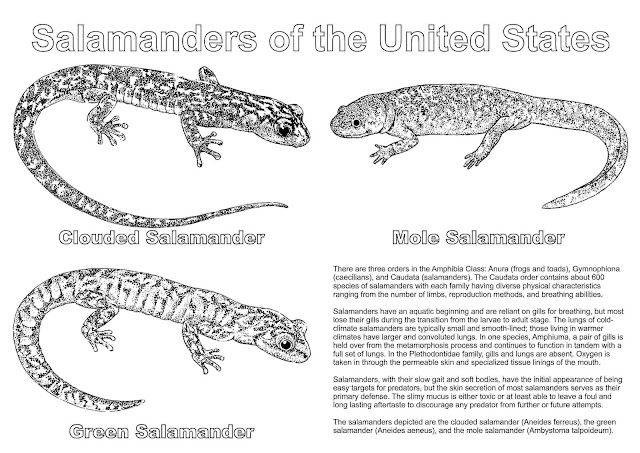There are three orders in the Amphibia Class: Anura (frogs and toads), Gymnophiona (caecilians), and Caudata (salamanders). The Caudata order contains about 600 species of salamanders with each family having diverse physical characteristics ranging from the number of limbs, reproduction methods, and breathing abilities.
Salamanders have an aquatic beginning and are reliant on gills for breathing, but most lose their gills during the transition from the larvae to adult stage. The lungs of cold-climate salamanders are typically small and smooth-lined; those living in warmer climates have larger and convoluted lungs. In one species, Amphiuma, a pair of gills is held over from the metamorphosis process and continues to function in tandem with a full set of lungs. In the Plethodontidae family, gills and lungs are absent. Oxygen is taken in through the permeable skin and specialized tissue linings of the mouth.
Salamanders, with their slow gait and soft bodies, have the initial appearance of being easy targets for predators, but the skin secretion of most salamanders serves as their primary defense. The slimy mucus is either toxic or at least able to leave a foul and long lasting aftertaste to discourage any predator from further or future attempts.
The salamanders depicted are the clouded salamander (Aneides ferreus), the green salamander (Aneides aeneus), and the mole salamander (Ambystoma talpoideum).
